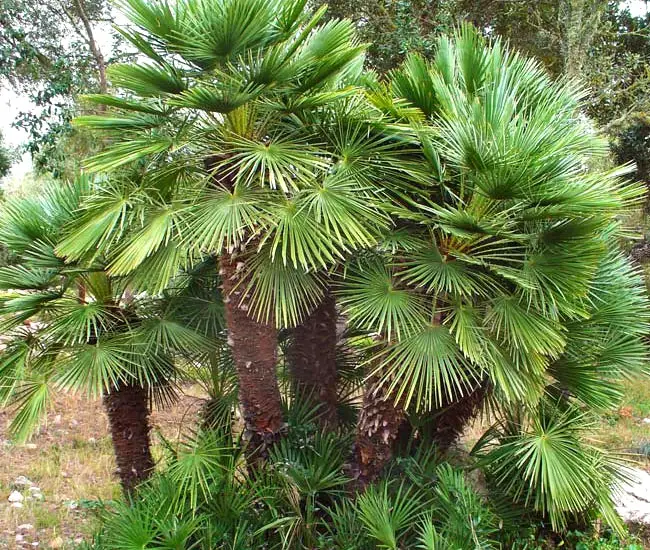
The European Fan Palm Tree (Chamaerops humilis) is native to the Mediterranean region of Southern Europe, Northern Africa, and some parts of the Middle East. It is one of the few palm species that is native to Europe.
This palm is commonly found in countries such as Spain, Italy, Greece, Morocco, Tunisia, and Algeria, where it thrives in the warm, Mediterranean climate and often grows in rocky, arid habitats.
Due to its adaptability and cold hardiness, it has become a popular ornamental plant in various parts of the world with similar climate conditions.
This attractive palm tree can serve as an exotic focal point in any garden, thanks to its evergreen fan-shaped leaves. Given its modest height, typically reaching around 10 feet, it is frequently selected for smaller yards.
Buy European Fan Palm Tree On Amazon »
Quick Facts:
| Scientific name: | Chamaerops humilis |
| Common names: | European Fan Palm, Mediterranean Fan Palm, Dwarf Fan Palm, and Palmito. |
| Origin: | Native to Mediterranean region of Europe. |
| Growth Rate: | Slow. Up to 5 – 10 ft tall and 1-5 ft wide. |
| Cold Tolerance: | USDA Zones 8a (10F – 15F) to 11 (above 40 F). |
| Light Req: | Full sun to partial shade. |
| Water Req: | Moderate. High drought tolerance (once established). |
| Soil Req: | Widely adaptable |
| Fruit: | Yes. Yellow, orange or brown. Not toxic. Not edible. |
| Propagation: | Seeds, germinating in 2-3 months; possibly division |
European Fan Palm Appearance
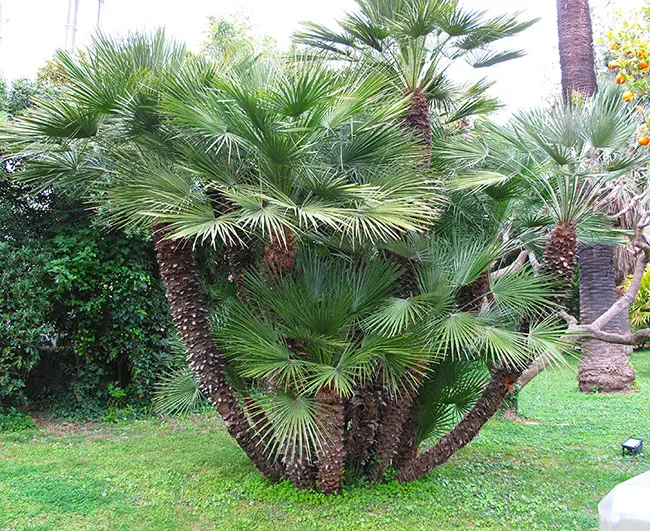
Chamaerops humilis typically grows in multiple trunk clumps that gracefully arch outward from the center, imparting a delightful tropical aesthetic. Emerging from the base, sucklings contribute to its shrubby appearance.
The trunks typically attain a diameter of about 8-9 inches and are generally covered with brownish fibers from old leaf bases.
This palm generally reaches a maximum height of 10 feet due to its slow growth rate, allowing it to thrive in large containers for extended periods.
Its leaves are triangular, palmate, or fan-shaped, showcasing a spectrum of colors from green to bluish-green to silvery gray. These leaves expand outward and upward, attaining dimensions of up to 25 inches in length and 25 inches in width.
Beware of the stems, as they are adorned with sharp thorns that require caution during pruning.
Flowers and Fruits of the European Fan Palm
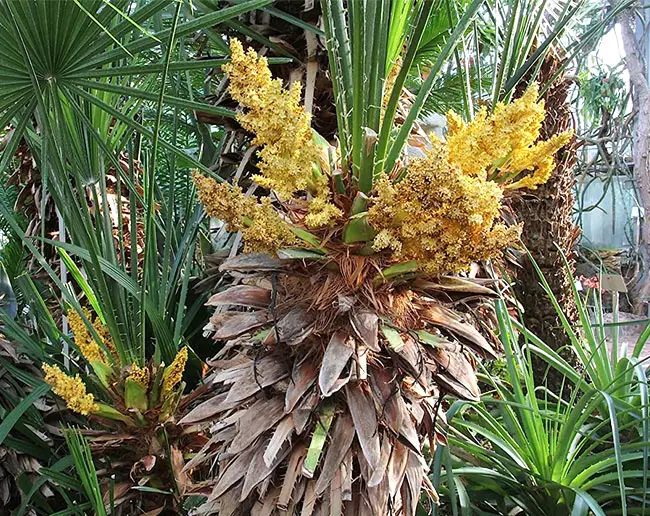
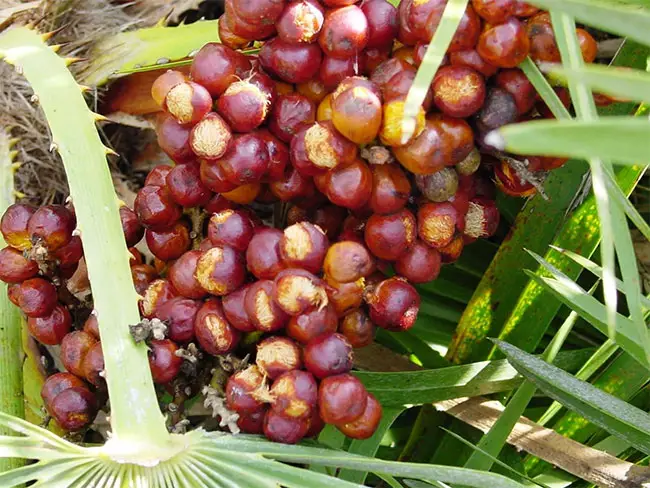
The European Fan Palm Tree (Chamaerops humilis) produces small, inconspicuous flowers. These flowers are typically yellow to yellowish-green in color and are borne in dense clusters at the base of the palm’s leaves.
While the individual flowers themselves are not particularly showy, the collective effect of these clusters can add a subtle charm to the tree, especially when they bloom in spring or early summer.
Regarding fruits, the European Fan Palm produces small, round, and fleshy fruits that are initially green and turn to a dark purplish-black color when ripe. These fruits, often referred to as “dates” or “palm dates,” are about the size of a small olive.
They are edible but not typically consumed by humans due to their relatively small size and fibrous texture. However, they are a food source for wildlife and birds, making them ecologically important.
The fruits of the European Fan Palm ripen in late summer to fall and can add an interesting ornamental element to the tree’s appearance when they are present.
How to Care for European Fan Palm
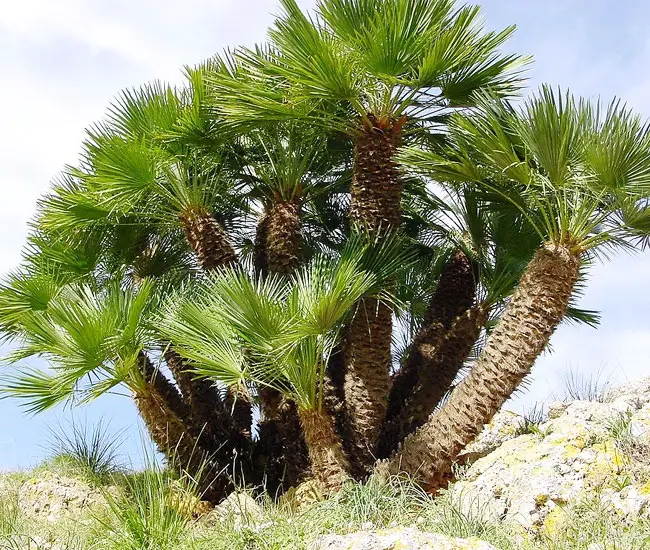
Once established, the European Fan Palm is a low-maintenance plant. It exhibits minimal soil preferences, except for the necessity of well-draining soil. In its native Mediterranean habitat, it thrives in poor, rocky soils, making it highly adaptable to a wide range of soil types in various landscapes.
While it thrives in full sun, it can also tolerate partial shade, albeit with slightly slower growth. It boasts exceptional drought tolerance and good salt tolerance.
The frequency of watering should be adjusted according to weather conditions and the season, typically requiring watering a few times a week.
This plant demands minimal pruning and has no specific nutrient requirements or susceptibility to diseases.
Light Requirements
For optimal growth, position it in full sun or light shade, as it may exhibit reduced growth and diminished appearance when placed in heavily shaded locations.
Inadequate sunlight can cause the fronds of Chamaerops humilis to grow slightly larger as they attempt to capture more light.
Don’t forget to acclimate your newly purchased plant before placing it in full sun. Since it was likely cultivated in a greenhouse at the nursery, allow it some time to adjust to higher light levels.
If you plan to grow it indoors, ensure it receives a minimum of three to four hours of full sun. During warm summer months, consider moving it outdoors to provide it with additional sunlight.
Soil
This resilient palm tree is not particularly demanding when it comes to soil. It readily adapts to a wide range of soil types, including rocky or sandy soils, as long as they provide adequate drainage. However, it does not thrive in overly wet conditions.
When planting a newly acquired palm, there’s generally no need to amend your garden’s soil unless it exhibits poor drainage.
Watering
For newly planted palms, it’s crucial to provide consistent watering while they acclimate to their new location and establish themselves. During the first week, water them daily, and during the second week, every other day.
Expert Tip: Deep watering, accomplished through a slow, steady trickle of water, works best for newly planted palms. This method allows the soil to absorb moisture efficiently and direct it to the tree’s roots.
Following this initial period, you can transition to a regular watering schedule, ensuring that the soil maintains good drainage.
Given the European Fan Palm’s drought tolerance, it’s advisable to let the soil dry between waterings. Applying a few inches of mulch can help retain soil moisture for longer durations.
Fertilizing
You can apply a high-quality palm fertilizer with a continuous-release formula once a year during the growing season. However, it’s best to avoid fertilizing newly planted palms to minimize stress.
Temperature
Chamaerops humilis ranks among the most cold-tolerant palm species globally. Native to the Mediterranean coast of Europe, it can endure even the rare sight of being entirely covered in snow.
Its optimal growth occurs in USDA Zones 8 (with temperatures between 10 to 15°F) to 11 (above 40°F). Nevertheless, it exhibits a remarkable ability to withstand cold temperatures down to approximately 5°F without suffering permanent damage.
While it may lose foliage at around 15°F, it typically bounces back in the following growing season.
With proper cold protection, it can even survive winter lows as low as 9°F without significant tissue damage. Due to its natural habitat, it thrives in climates characterized by dry winters and low humidity.
It’s worth noting that robust cold winds can be more damaging than the cold temperatures themselves.
Pruning
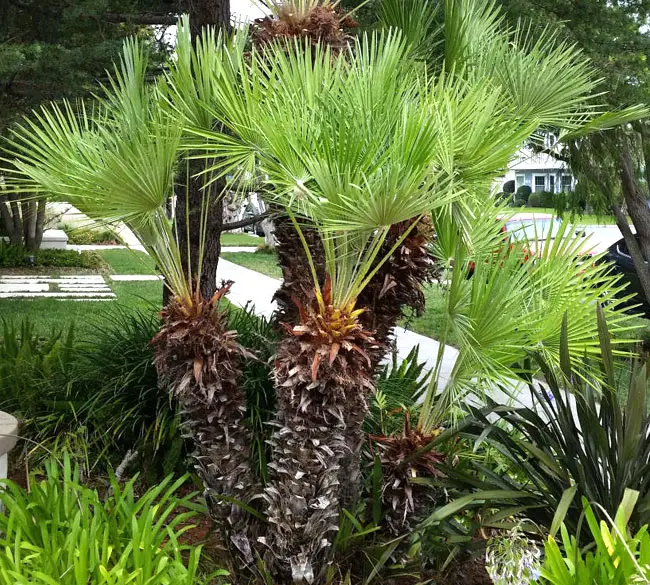
One of the most significant advantages of owning a European Fan Palm is its low maintenance. Unlike some other palm varieties that demand frequent trimming to maintain their appearance, the European Fan Palm can be left undisturbed for many years.
As mentioned earlier, Chamaerops humilis forms clusters of trunks and produces suckers that emerge from the base, creating a bushy appearance that eventually develops into a wide clump.
To keep the trunk and sucker growth in check, occasional pruning is necessary. If you prefer a bushy look, simply remove old, dry leaves. However, for a more elegant appearance that highlights its beautiful trunks, trim the bottom fronds.
This process typically involves two cuts for each branch: first, remove the unwanted frond with those sharp needles, and then trim the remaining leaf base. Always use sharp, clean tools and wear gloves to protect yourself from the thorns.
Expert Tip: Remember that green palm leaves and fronds serve as the palm’s primary source of nourishment, so avoid excessive pruning. Never prune any leaves growing above a horizontal plane.
An example of over-pruned Mediterranean Fan Palm demonstrates the removal of too many fronds while leaving behind leaf bases that are best removed to achieve a cleaner look.
Disposing of these sharp fronds is straightforward; simply bundle them on a large plastic cover and discard them.
Common Pests/Diseases
The European Fan Palm experiences very few nutrient problems, and diseases or pests are also rare. Additionally, it has a reputation for being resistant to lethal yellowing disease, a significant concern for many palm species.
Propagating
You can grow the Mediterranean Fan Palm from either suckers or seeds. Suckers are straight shoots that grow upward from the palm’s root ball and can be removed to establish a new plant.
Propagation With Suckers Step-by-Step:
- Begin by thoroughly watering the palm to loosen the soil, facilitating easier separation of the roots.
- Once the clump is loosened, pull one of the suckers to identify where the roots are attached.
- Cut the sucker free as deeply as possible from the main root, using a knife or shears.
- Plant the sucker in a pot filled with moist potting soil.
- After transplanting, the palm may experience some shock. Keep it at room temperature in a shaded area away from direct sunlight.
- Water the newly planted sucker frequently, ensuring that the soil remains moist but not waterlogged until new growth begins to emerge.
Propagation From Seeds Step-by-Step:
- Start with ripe fruit, which typically display yellow, orange, or brown coloring. Immature green fruit will not germinate.
- Extract the seeds from the fruit. If the seeds have been recently cleaned, there’s no need for soaking. However, if you’ve obtained dry seeds, soak them in clean, chlorine-free water for 24 hours.
- Place the seeds in a plastic container filled with germinating mix, ensuring that the soil is at least 4 inches deep to accommodate root growth.
- Position the seeds so that they are half-submerged in the soil. Keep the container in a warm location, approximately 75°F.
- Maintain slightly damp soil consistently to prevent the seeds from drying out.
- Typically, it takes 2 to 3 months for the seeds of the Mediterranean Fan Palm to germinate.
- Wait until the palm develops at least one leaf that has hardened off before considering repotting it.
Landscaping With European Fan Palm
When planted as a specimen, this palm becomes a captivating sculptural element. Its rounded shape also lends itself well to formal garden designs.
Consider using it in large planters near buildings, walls, or walkways, or pair it with succulents to create visual contrast.
However, exercise caution when choosing its placement, as the stems are covered with sharp thorns. It’s advisable to keep it away from high-traffic areas like play areas, driveways, or walkways.
Chamaerops humilis also serves as an excellent container plant, suitable for placement near entrances, patios, pools, or courtyards.
Growing European Fan Palm Indoors
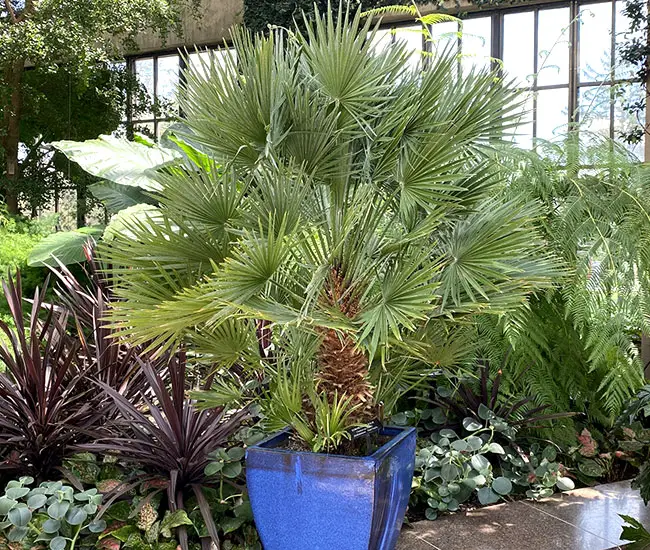
This makes for an excellent indoor plant due to its impressive adaptability to a wide range of conditions and its ability to thrive in low humidity environments. If you reside in a colder climate, cultivating it as a houseplant in a container is a practical solution.
During the warm summer months, you can easily move it outdoors, while in the colder winter season, you can bring it indoors to shield it from freezing temperatures.
When watering your indoor Chamaerops humilis, opt for filtered or distilled water as this palm is highly sensitive to chemicals. Over time, chemicals such as fluoride and chlorine, commonly present in tap water, can accumulate and adversely affect the plant.
Frequently Asked Questions
In this section, I want to answer some of the most popular questions I get about this plant.
How Fast Does European Fan Palm Grow?
The Mediterranean Fan Palm is a slow-growing species, adding about 5 inches in height annually, eventually reaching a full stature of only 10-15 feet. It may take a substantial 10-15 years for it to attain a height of 7 feet.
While it may grow slightly faster when exposed to full sun as opposed to partial shade, the difference in growth rate is not significant. Regular fertilization can potentially expedite its growth.
Are Chamaerops Humilis Fruits Edible?
While very young leaf buds of the Chamaerops humilis are utilized as a vegetable, the fruits are not considered poisonous, yet they possess an intensely bitter taste and are thus not used as a food source.
Importantly, these fruits are not toxic to dogs, should you have concerns about your canine companion consuming them.
How to Protect European Fan Palm From Cold Weather?
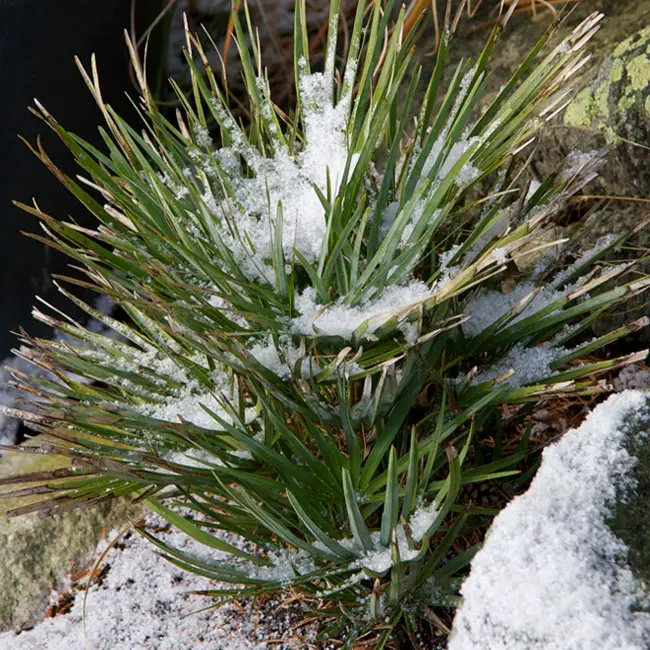
The Chamaerops humilis is exceptionally cold-hardy and typically does not necessitate protective measures. If you are cultivating it within USDA Zones 8-10, you should encounter no issues.
This palm can endure temperatures as low as 10°F and has even been known to survive as low as 3°F without enduring permanent damage. Although it may lose foliage following such extreme cold exposure, it typically fully recovers in the subsequent growing season.
For those situated in Zone 7 or those who wish to provide additional cold protection, several options are available:
- Covering it with landscape fabric is an effective safeguard.
- Wrapping Christmas lights around its trunks and stiff leaves can generate additional warmth.
- Applying a generous layer of mulch offers insulation.
- Spraying the crown with fungicide/bactericide spray can help combat cold-related issues.
For those seeking extra protection, constructing a temporary greenhouse around the palm is a viable option. Given its manageable size, this is feasible; however, ensure the greenhouse is sturdy enough to withstand strong winds and the weight of accumulated snow. For further ideas on protection from winter freeze, you can explore “10 Ways To Protect Palm Trees From Winter Freeze.“
European Fan Palm Pictures
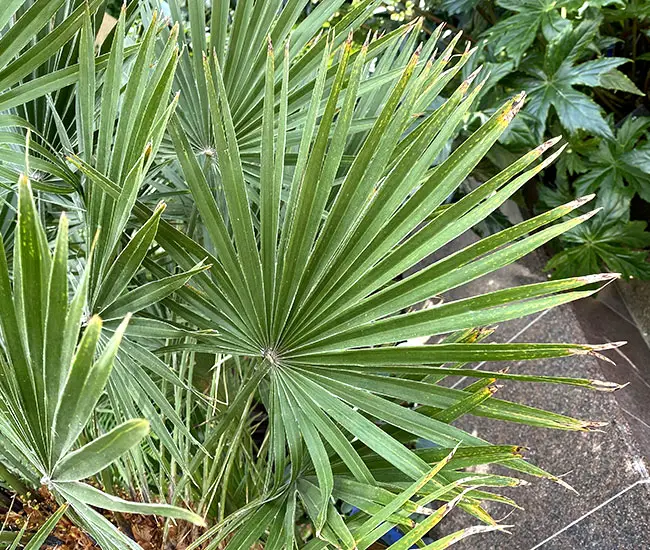
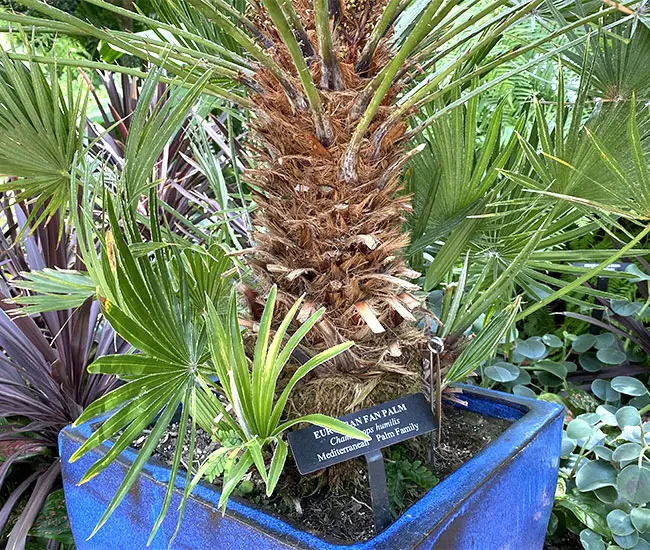
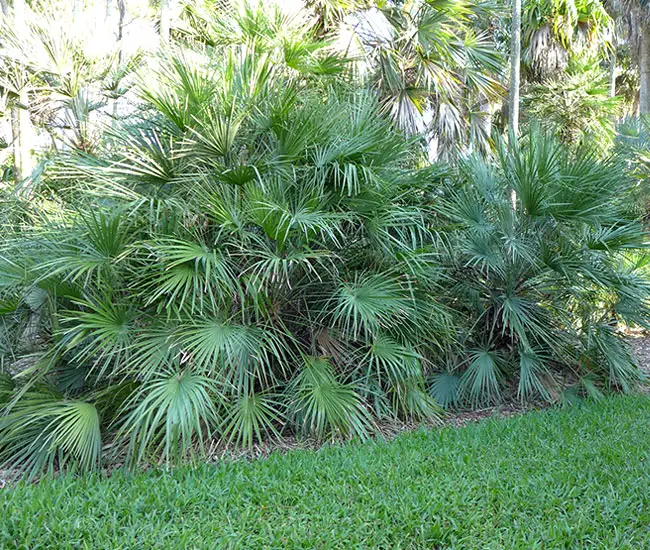
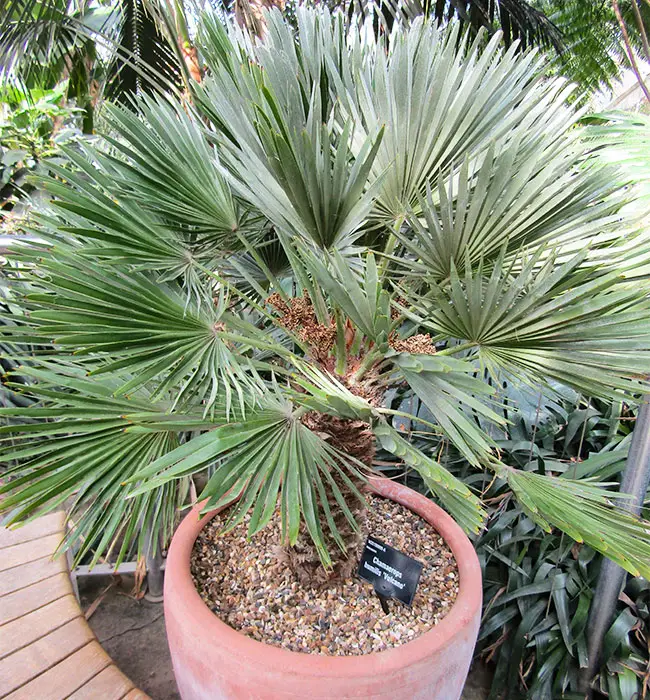
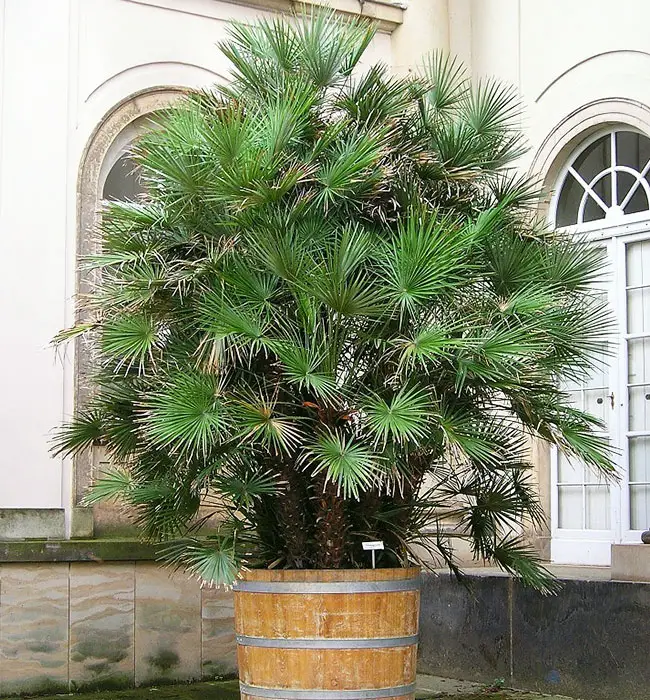
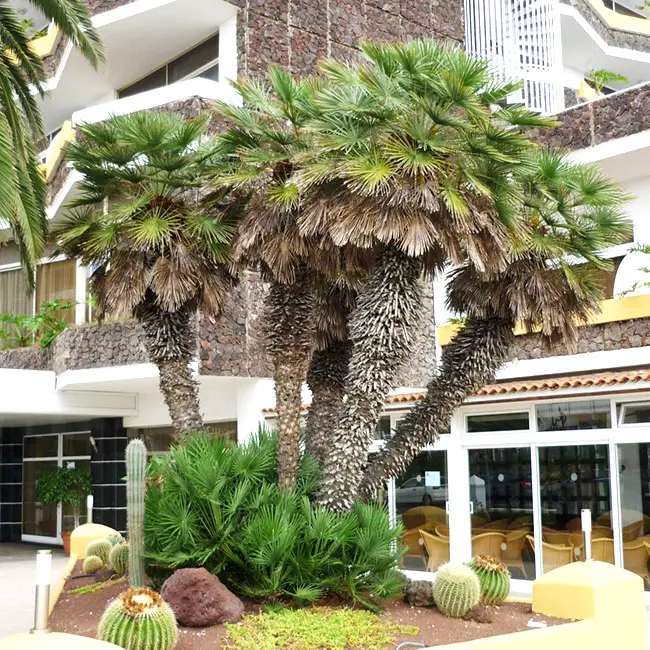
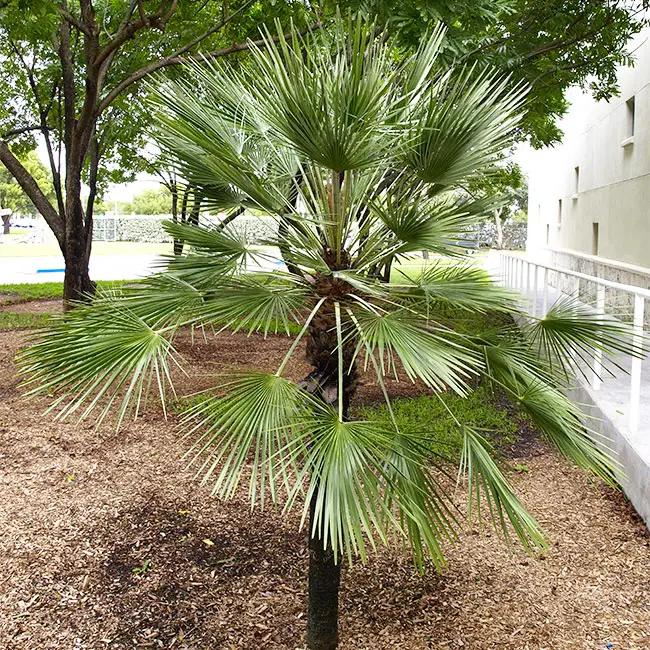
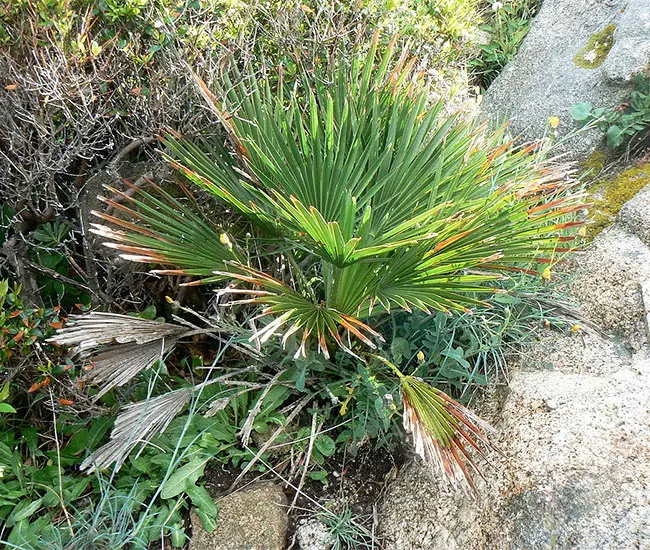
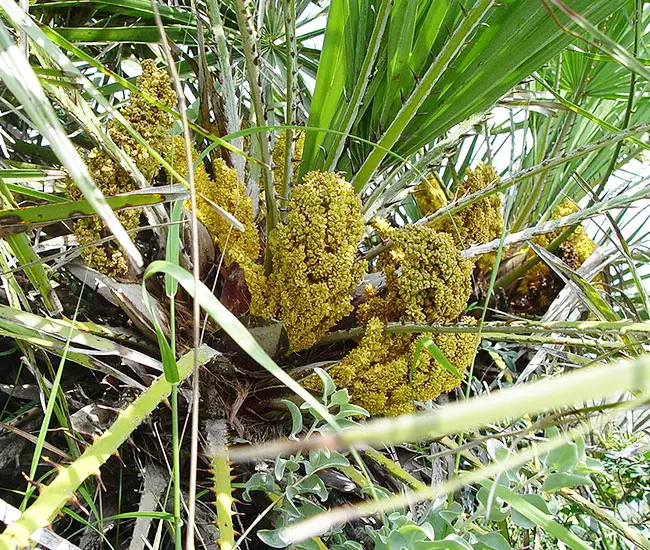
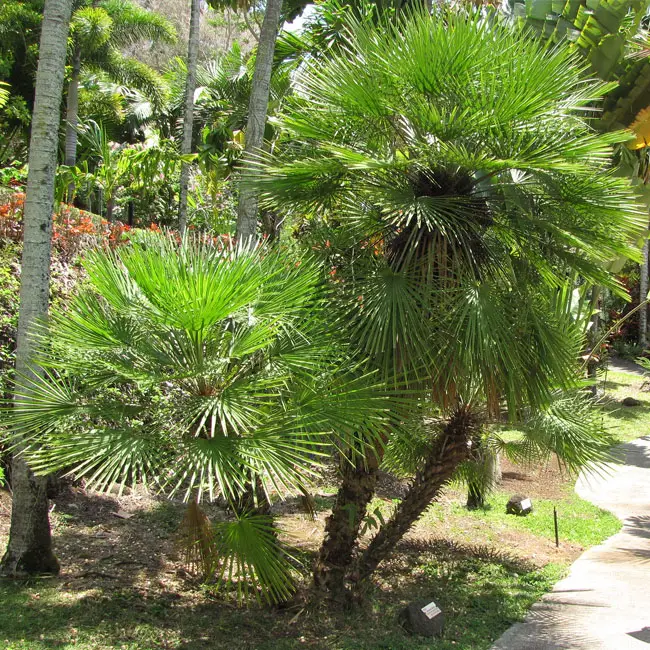
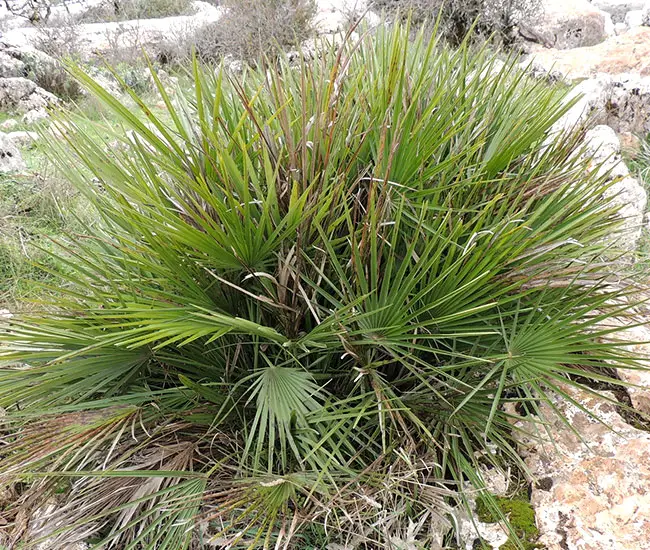
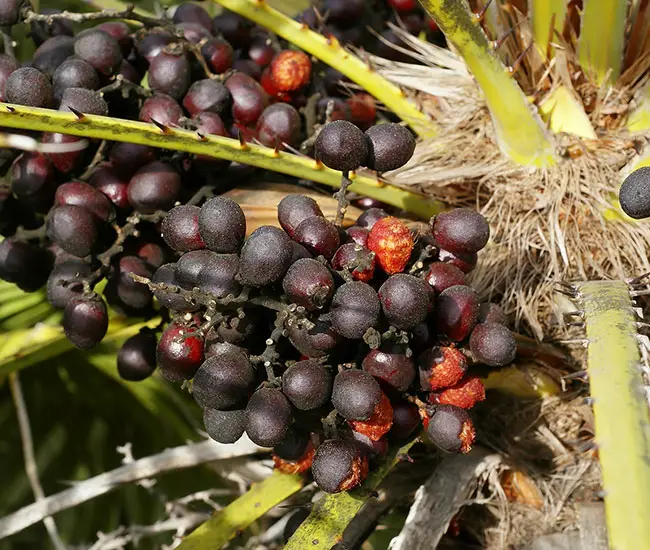
More information can be found on EDIS and Floridata sites.
Buy European Fan Palm Tree On Amazon »

Can you remove the baby plants surrounding the biggest trunk of a European fan palm?
Hi i have a fan palm in a garden where i work which is over 100 years old can you tell me how long do they live for? many thanks,paul
i am trying to identify a palm with a single thick trunk and about 7’ or longer pinate fonds. These have very long yellow spike thorns on the trunk, below the fonds. I have seen pictures of the spikes, but not a total picture to clarify if it is the same tree. And, the picture was identified as a pheonix Theophresti, but when I look for images of that palm, I do not see the palm I am looking for, or even one with long thorns.
What is the best time of the year to plant the European fan palm in Florida with 4 ft plant already growing in a large container?plant is in central Florida within 25 miles from gulf waters?no salt water in fluency .
TNX for reply.